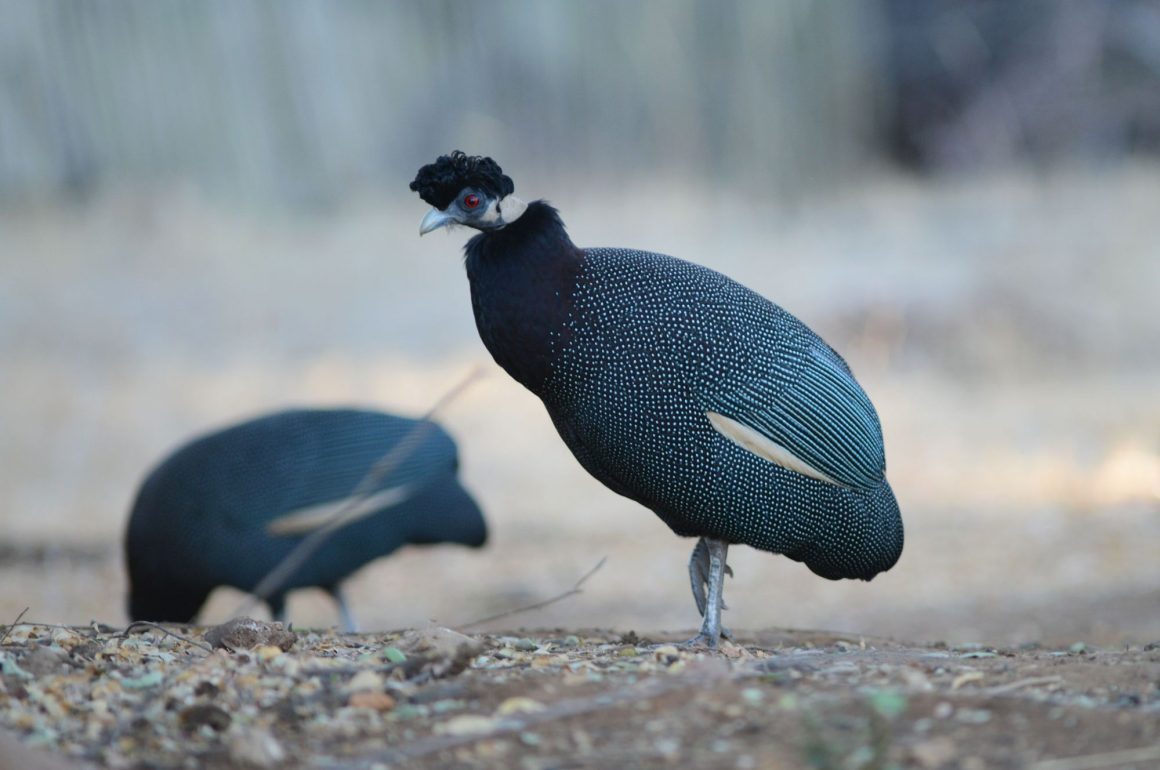
My family visited Kruger National Park on average twice a year over the 11 years we lived in South Africa, and despite the longer drive than the southern areas of the park, the Punda Maria camp in the northernmost section of Kruger was one of our favourite areas. It has the feeling of being slightly more remote, which is confirmed by the smaller number of visitors and greater selection of special birds. This is the final of several posts I wrote on birding in and around some of the camps of this great national park, with previous ones being on Pretoriuskop, Berg-en-Dal, Skukuza, Satara, and Letaba.
The most obvious and entertaining proof of Punda Maria being more tropical than the rest is given by the group of Crested Guineafowls that routinely forage in the camp, replacing the Helmeted Guineafowls in other areas. These birds strike the perfect balance between being beautiful and comical, with the white pearls on their plumage and the wobbly crest being their most valuable assets in these two respects. I often spent ages watching the stunning bluish and creamy tones of their finely ocellated body and wing plumage that are so much more intricate than on their helmeted cousins (hence being awarded the featured image).
The other birding highlight of the camp – which is quite something after having watched Mosque Swallow and breeding Bearded Woodpeckers from my camping chair – are the Brown-necked Parrots that come to drink at the waterhole in front of the camp. These are usually joined by Brown-headed Parrots, although the two don’t always seem to get along (see image).

Smaller and more widespread birds are of course also around, with Green-winged Pytilia being a particular favourite of mine. I did spend quite a while watching them because I hope an Orange-winged Pytilia would show up, as it did in the camp for quite a while. Being unlucky in this regard, I fortunately appreciated the delicate colours and finely barred underparts of this species, pretty in its own right.
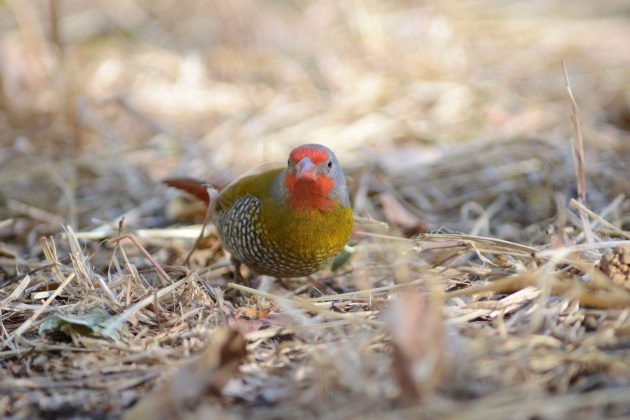
The cafe and shop was also a nice area to hang out – not particularly because of their food (although I could never resist a small snack in the form of an ice cream here) but because of a breeding pair of Southern Black Tits in a tree hole here. These birds were busily bringing in food for their offspring, apparently not bothered by this being the one place in the camp with the most human activity (or perhaps this kept predators at bay during the day?).
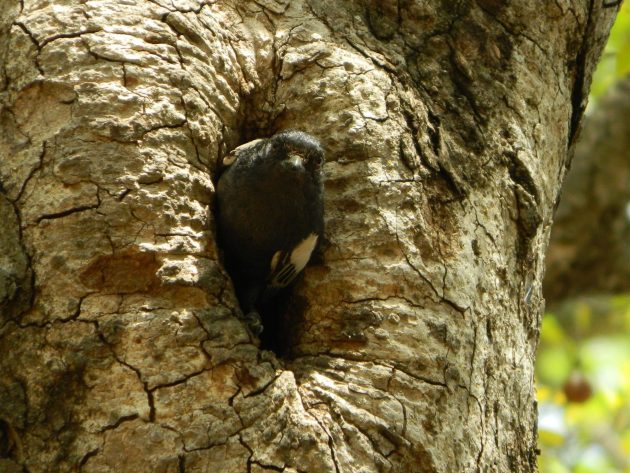
Game drives around here did not produce as many exciting game animals as other areas of the park, but the ensuing lower tourist numbers is exactly why we always enjoyed this region of the park. Besides, over our multiple visits to the area, we still saw all the big five here, including one of our best leopard sightings. However, the birds are of course more exciting here, with one of the highlights being Arnot’s Chat. We only saw this species once here, but I’m not sure whether it can more easily be found if specifically looked for.
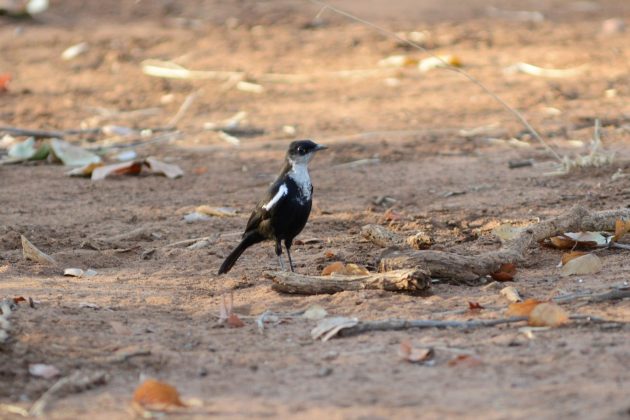
A more widespread but nonetheless thoroughly enjoyable bird to come across is the Double-banded Sandgrouse. As these birds are usually not very shy, their intricately-marked plumage can often be admired at length. The Mahonie loop where we saw this species was very productive in general, with Greater Painted-Snipes being probably our best bird here.
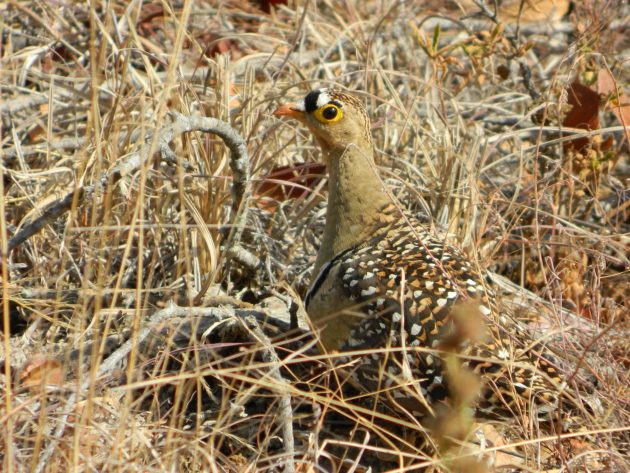
The northernmost area of Kruger offers particularly exciting birding. Although we’ve never visited the area during peak birding season (such as early summer when even Pennant-winged Nightjar can be found here!), this was very noticeable. Particularly the area around Pafuri and Crooks’ Corner is worth exploring, as this is known for various subtropical riverine and woodland species.

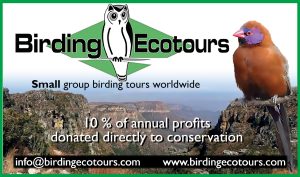
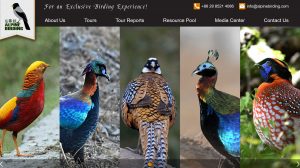
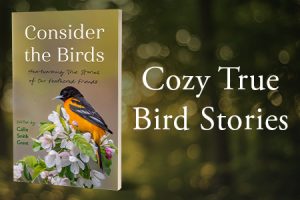
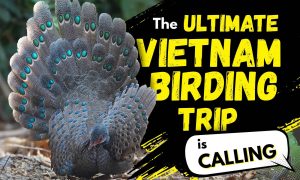

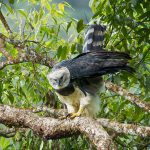
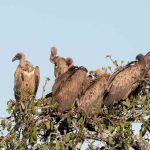
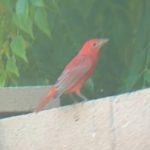
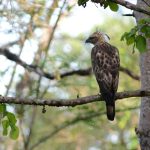
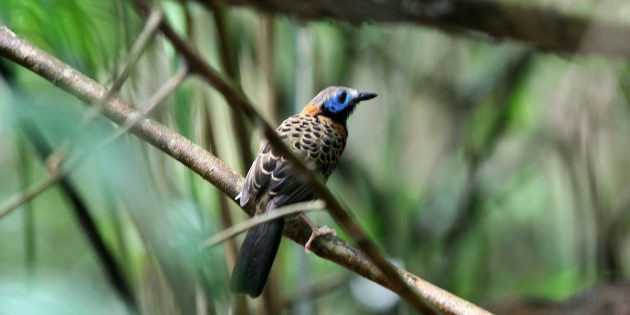
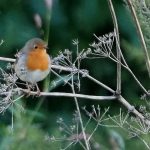
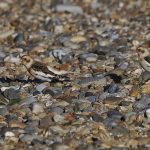
Leave a Comment